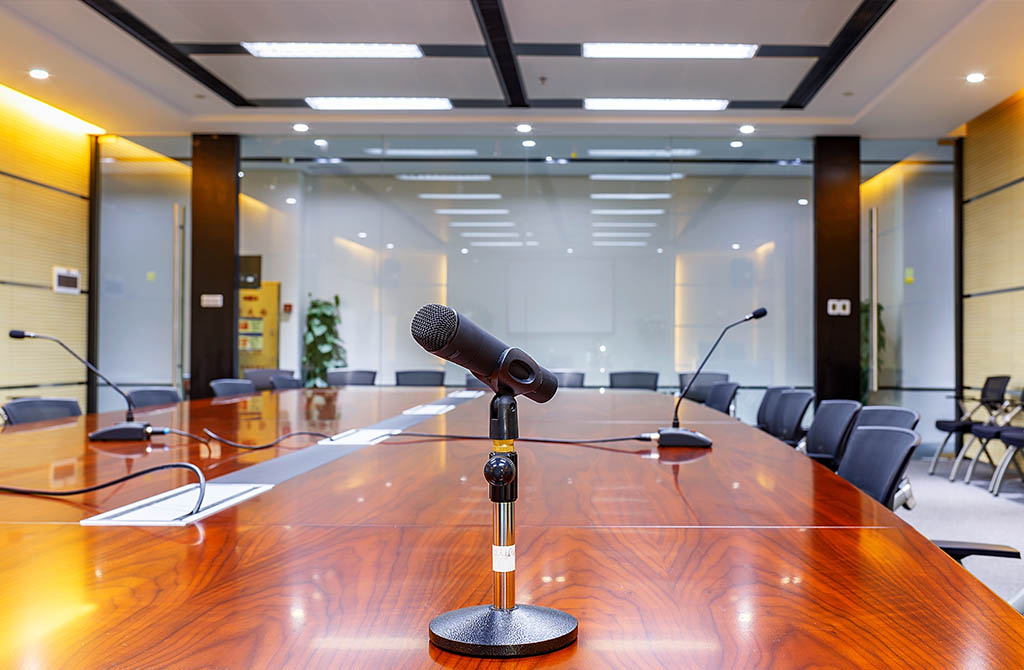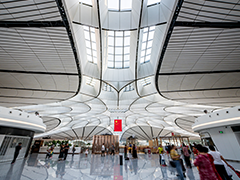Planning and overall design principles for multimedia conference rooms
- Categories:Industry News
- Time of issue:2018-09-26 14:59
- Views:
(Summary description)Use technology to best solve problems and provide maximum value to customers. Expected results within budget, within expectations, and harvested. Ultimately, the user is satisfied.
Planning and overall design principles for multimedia conference rooms
(Summary description)Use technology to best solve problems and provide maximum value to customers. Expected results within budget, within expectations, and harvested. Ultimately, the user is satisfied.
- Categories:Industry News
- Time of issue:2018-09-26 14:59
- Views:


Meeting system planning considerations
Conference system engineering refers to the integration of sound, light, electrical equipment and software associated with the conference. The conference system design covers all of the above aspects. The integration of the conference system is to carry out the planning and design project through careful analysis and understanding of the customer's needs. Use technology to best solve problems and provide maximum value to customers. Expected results within budget, within expectations, and harvested. Ultimately, the user is satisfied.
Research and exploration are required before the design of the conference. Conduct scientific design planning.
Meeting system planning considerations
1. Purpose of use of the conference system
2. The level of the conference system
3. Scope of service
4. Conference management ability
5. Thinking with the international application environment
6, functional price relationship, economic benefits
7. System quality and service system
Design principles of multimedia conference systems
1. Advanced principle
The system architecture adopted should be an advanced, open architecture, and scientific in the use of the system. The entire system can reflect the development level of today's conference technology.
2. Principle of practicality
It can meet the requirements of actual work to the maximum extent, consider the business management of satisfying users as the first factor, adopt the mode of centralized management control, and it is easy to operate, simple to maintain and easy to manage on the basis of satisfying the functional requirements.
3. The principle of scalability and maintainability
To reserve space for future system upgrades, system maintenance is the largest proportion of the entire system life cycle. It is necessary to fully consider the rational design of the structure, and the maintenance of the system can be completed in a short time. In addition, under the premise of ensuring the system's advanced, reliable and high performance price ratio, the most economical goal is achieved by optimizing the design.
Multimedia conference system function design
The design scope of the multi-functional conference system project includes conference, audio, video, video, audio and video and teleconferencing system design for the conference room, and realizes the multimedia conference function of the conference room to meet the simple and smooth conference process, realistic and vivid hearing effect. Clear and comfortable video display, intelligent camera tracking, complete meeting minutes, convenient and fast teleconferencing requirements. The whole system is roughly divided into five parts: display and monitoring, pickup and sound reinforcement, signal transmission and control of camera lighting, and video conference. It consists of large-screen display, plasma display, audio, video surveillance video, multimedia audio and video signal source matrix switching and central integrated control, camera lighting and control.
Functional design: mainly used to hold large and medium-sized conferences, such as press conferences, product exhibitions, presentations, signing ceremony, staff training, etc. In terms of functional design, it is required to consider its versatility and advancement, which should be embodied in the following aspects:
1. Advanced display function: It can effectively display and display the latest content in various fields. This requires the use of today's most advanced multimedia representations: text, language, images, continuous images, computer documents and more.
2, perfect meeting function: to meet various levels of meetings, academic forums, reports and other forms of meeting activities. Meet public events such as press conferences, celebrations, and signing ceremonies. Powerful training functions: technical training, teaching, product introduction; large annual meeting, monthly meeting, company regular meeting.
3, general performance features: can perform general non-professional literary evening performances in the form of a variety of dinners, receptions and dances.
4. The frequency signals are mixed and switched, and the processing result is sent back to the terminal participating in the conference.
Multimedia conference system function requirements
The use and function of modern conference rooms, due to the rapid development of computer multimedia technology and digital communication technology, the amount of information is getting larger and larger, the means of processing information is more and more advanced, and more and more devices need to be operated. Therefore, if the above functional requirements are met, the multimedia conferencing system must provide at least the following operational functions:
1. Meet the needs of meetings, discussions, speeches, lectures, training, academic exchanges, etc.;
2. Meet other needs such as simultaneous interpretation, remote video conferencing, karaoke singing, etc.
3, with good on-site pickup, expansion (release) sound, recording function, in short, it is clear, understand, and remember firmly;
4. It has good on-site camera, playback and video recording functions, and can play video signals on multiple record carriers;
5, with computer multimedia information playback, storage functions;
6, with a variety of documents, photo (bottom) film or physical display functions;
7. It has centralized control functions that simplify system operation and so on.
Compared with the previous conference system, the intelligent conference system has significant advantages: the integrated design makes all the devices in the conference room organically unified, which greatly enriches the functions of the entire conference and significantly improves the efficiency. The intuitive and visualized interface of the LCD touch screen makes it easy and fast to control many devices.
Specific needs of modern conference rooms
The most basic use requirements of modern conference rooms are as follows:
1. Meet the needs of meetings, discussions, etc.;
2. Meet the needs of lectures, lectures, training, academic exchanges, etc.
3, according to the specific use requirements, to meet other needs such as simultaneous interpretation, remote video conferencing, DVD disc-style surround sound movie playback, karaoke singing and so on.
4. The above basically covers the needs and functions of modern conference rooms. Although these requirements seem simple, due to the rapid development of computer multimedia technology and digital communication technology, the amount of information is getting larger and larger, and the means of processing information. It is also becoming more and more advanced, and various electronic devices for different needs are becoming more and more detailed, and more and more devices need to be operated. Therefore, if the above functional requirements are met, the multimedia conference system must provide at least the following operational functions:
5, with good on-site pickup, expansion (release) sound, recording function, in short, it is clear, understand, and remember firmly;
6, with good on-site camera, playback, video recording function, can play a variety of video signals on the record carrier;
7, with computer multimedia information playback, storage functions;
8. Display functions with various documents, photographs (bottom) or objects;
9. It has centralized control functions that simplify system operation and so on.
In addition, depending on other specific uses, the multimedia conferencing system also needs to provide operations such as simultaneous interpretation (at least with simultaneous interpretation extension interface), remote video conferencing (at least with remote video conferencing interface), surround Sound decoding and sound amplification operations, as well as reverberation effects and mixing operations for karaoke singing.
Conference system equipment selection principle
Selection principle of equipment for standard digital conference system equipment
1. Choose internationally renowned brand equipment, and manufacturers and agents with strong strength and absolutely excellent technical capabilities to ensure the realization of system design indicators and system functions.
2. The most advanced technology, the most advanced technology, the most reliable, the most widely used and most convincing product models are selected to ensure the advancement, maturity and stability of equipment and systems.
3. The use of highly intelligent, high-tech products, the system uses an open architecture, standardized and modular design requirements, not only easy to manage and maintain the system, but also maintain the advanced nature of the system for a longer period of time, so that in the future System upgrades do not require repeated procurement of equipment, reducing waste of resources and reducing expenses.
4. The selection of brands with independent intellectual property rights will save the company's future maintenance and upgrades.
5. The principle of economy and practicality, the choice of cost-effective products. The selected products are not only better than the performance, function, quality, but also the price of the same performance and similar products.
6. Products with strong requirements are the backbone. Equipment manufacturers are required to have professional after-sales service and product maintenance companies in the mainland to provide better technical support and after-sales service system.
Scan the QR code to read on your phone
Related News

OBT WeChat

OBT Mobile Website
Copyright © Shenzhen OBTPA Technology Co.,Ltd. 粤ICP备18028288号






